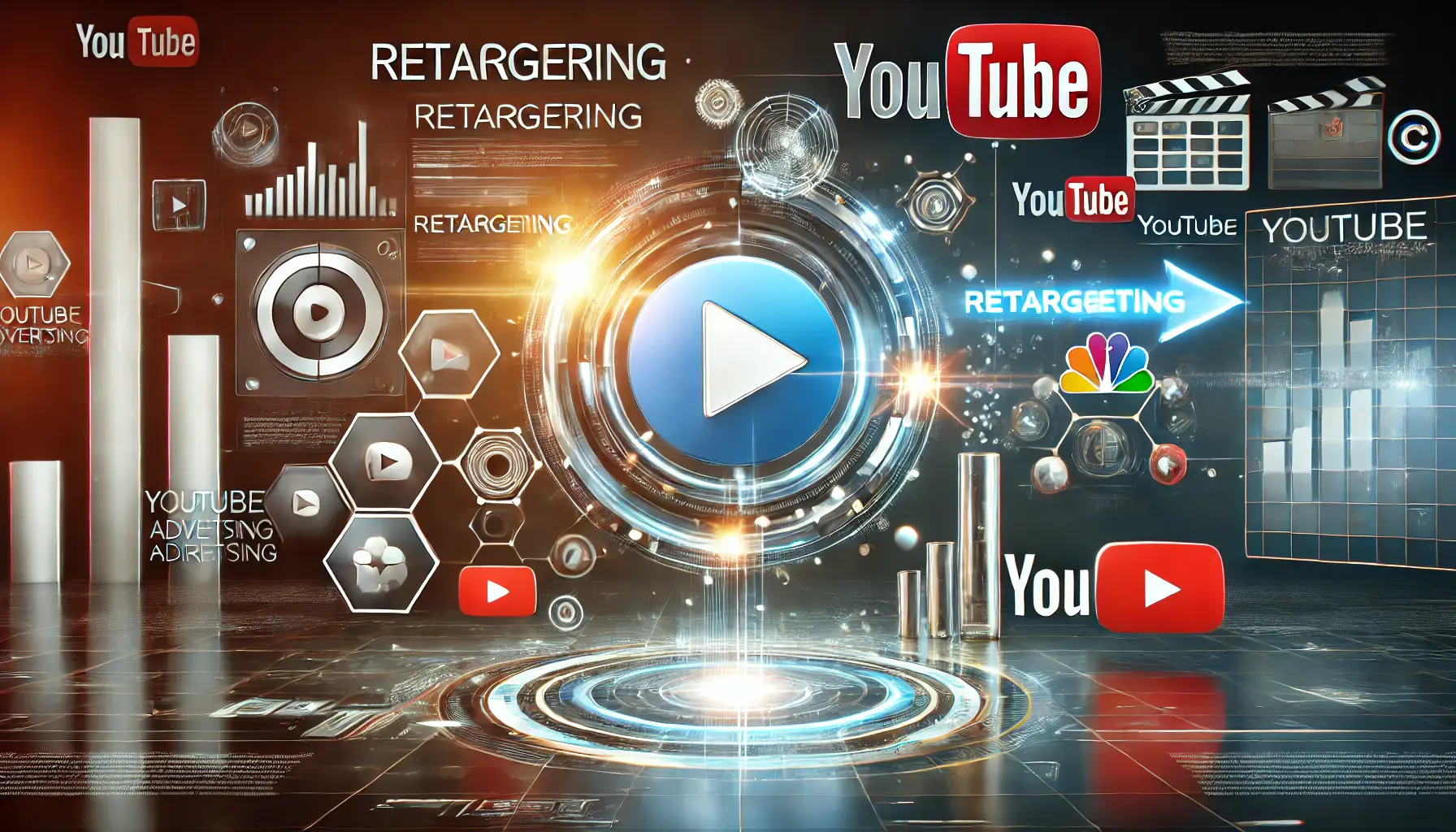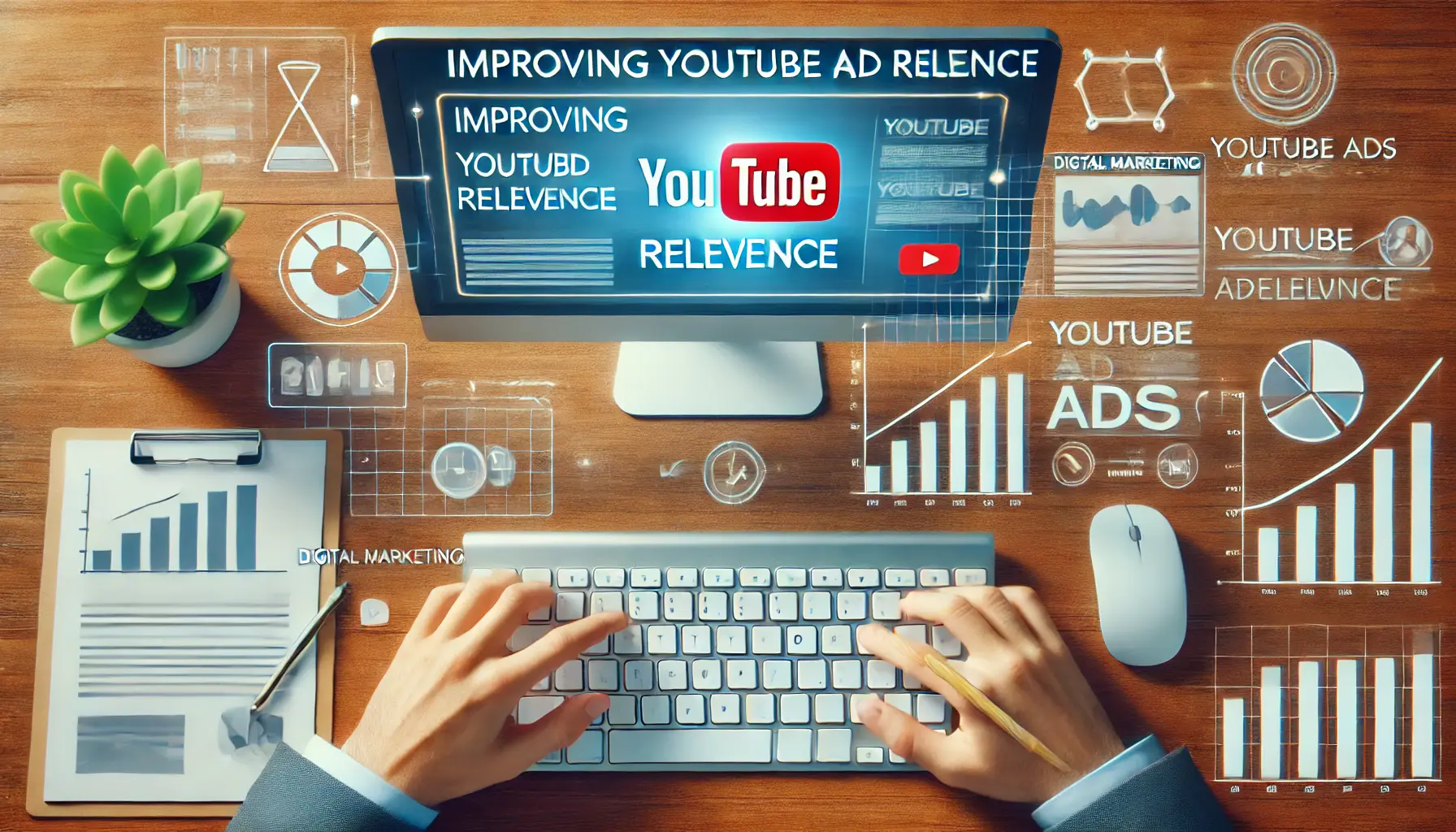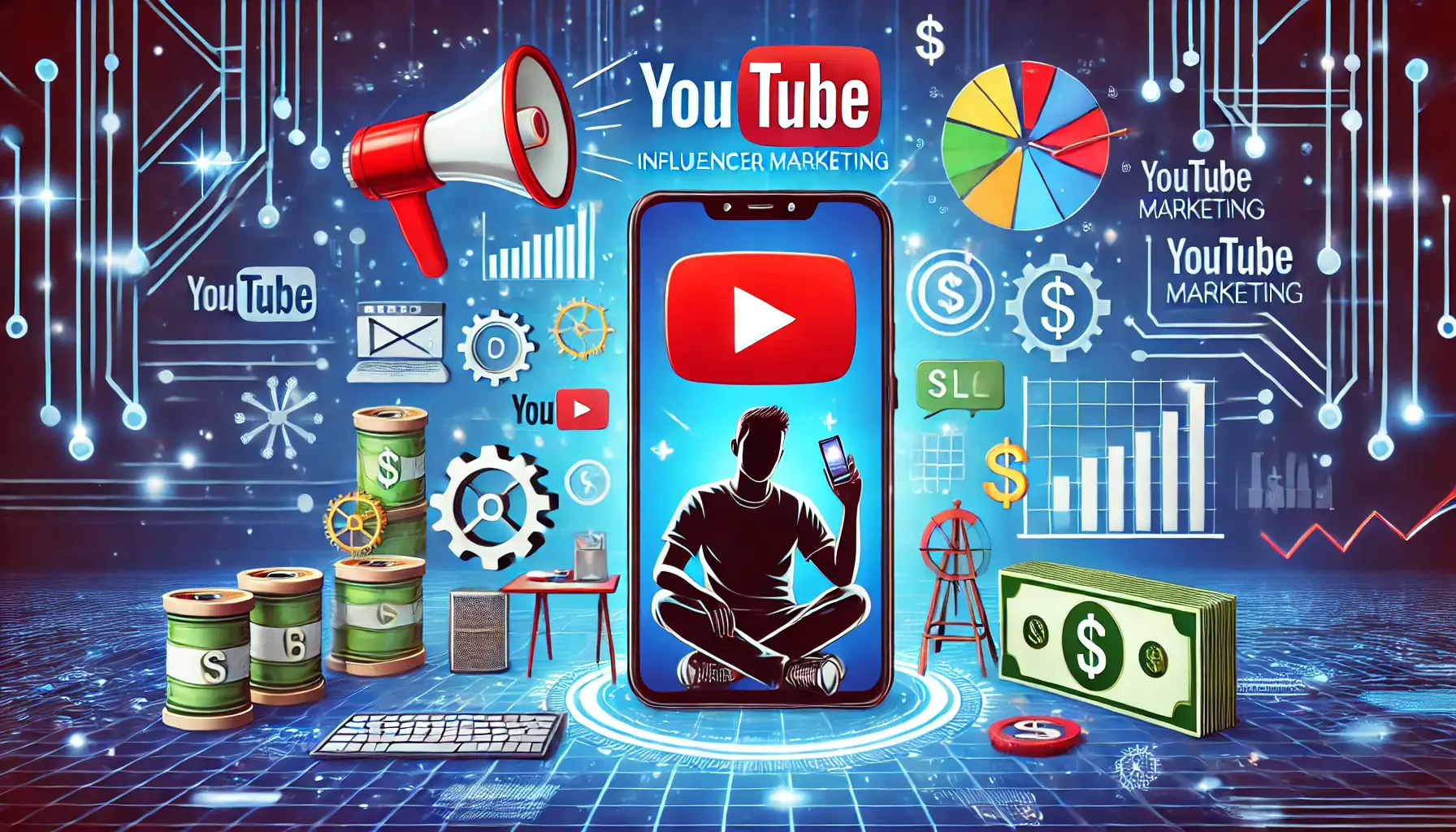With its wide reach and diversified audience, YouTube has evolved as one of the most effective channels for advertisers.
If you have ever wondered how viewers could be converted into customers, retargetingA marketing tactic that re-engages users who have previously interacted with a brand. is the magic wand you have been looking for.
This powerful marketing tactic ensures that your ads reach those who have already interacted with your brand, which increases the chances of conversions.
In this article, we’ll delve into five effective retargeting tactics for YouTube ads to help you get the most out of your campaigns.
- Understanding YouTube Retargeting
- Setting Up Your YouTube Retargeting Campaign
- Advanced Retargeting Strategies for YouTube Ads
- Measuring and Optimizing Your YouTube Retargeting Campaigns
- Common Challenges in YouTube Retargeting and How to Overcome Them
- Maximizing Success with YouTube Retargeting
- Frequently Asked Questions About YouTube Retargeting
Understanding YouTube Retargeting
Retargeting, also called remarketingA synonym for retargeting, used to re-engage past users or visitors., is a tactic whereby you re-engage with users who have shown interest in your products or services.
On YouTube, this means that your potential audience includes viewers who have watched your videos, visited your channel, or engaged with your brand on other Google platforms.
Retargeting these audiences strategically can drive significant brand lift in the sales cycle.
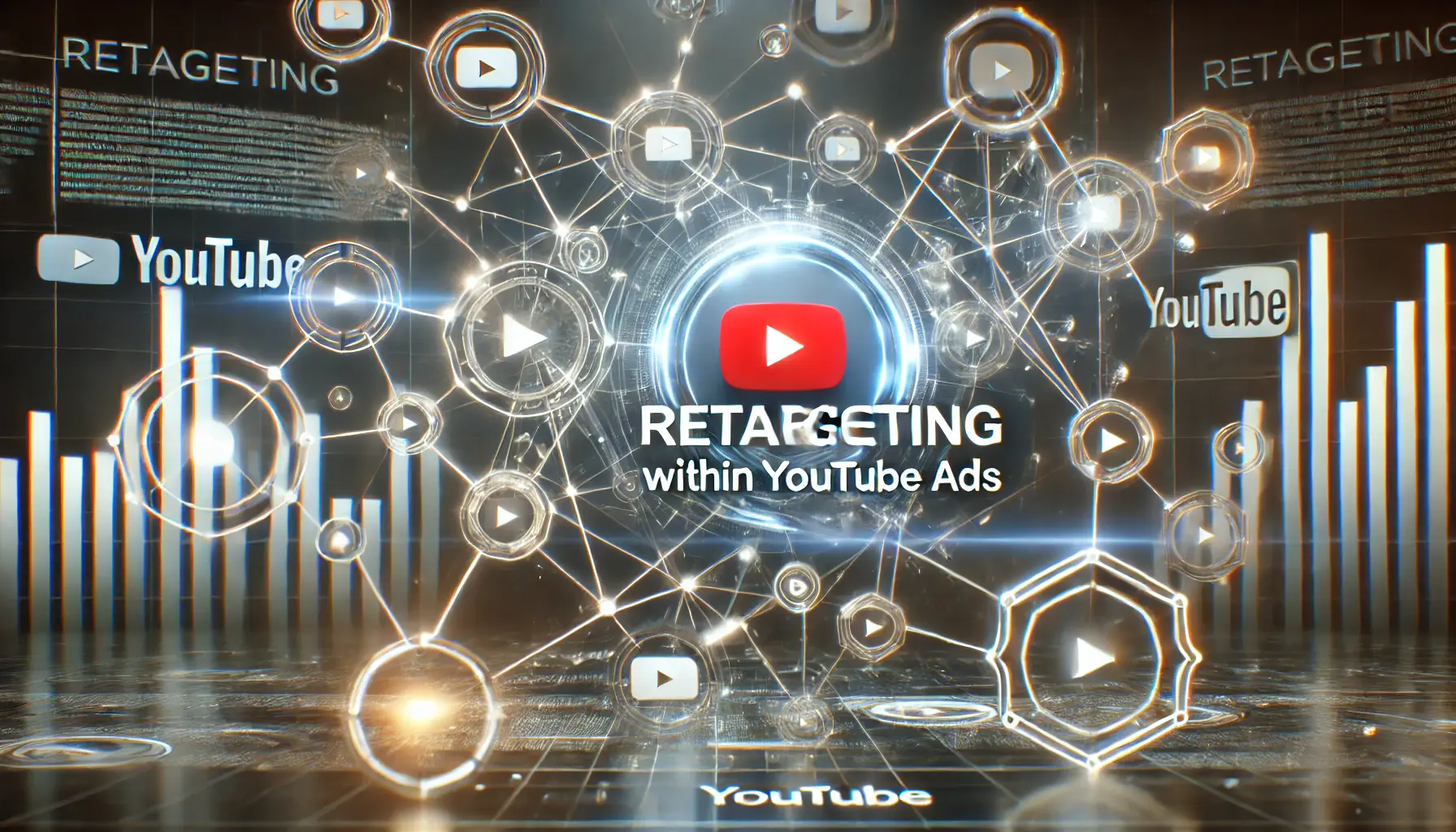
Exploring the concept of retargeting within YouTube Ads.
What Is Retargeting in YouTube Ads?
Retargeting on YouTube gives you the chance to engage an audience that may already be aware of your brand.
Unlike cold audiences, these users have interacted with your content in some form, hence their chances of conversion are higher.
For example, you may retarget users who have watched a specific video or clicked your ad previously but didn’t buy anything.
This familiarity with your brand is the backbone of successful retargeting campaigns.

Highlighting the advantages of retargeting on YouTube Ads.
Benefits of Retargeting on YouTube
Retargeting offers numerous advantages for your YouTube advertising campaigns:
- Increased Conversion Rates: Targeting users who are already familiar with your brand significantly improves the likelihood of conversions.
- Cost-Effectiveness: Since you’re focusing on a smaller, engaged audience, your ad spend is used more efficiently.
- Enhanced Brand Recall: Frequent exposure through retargeting reinforces your message and keeps your brand top of mind.

Contrasting YouTube’s unique video-centric approach with other platforms.
Key Differences Between YouTube and Other Platforms
Due to the uniqueness of YouTube’s format and audience behavior, its strategies stand in contrast to those utilized on platforms such as Facebook and Instagram:
- Video-Centric Approach: YouTube relies heavily on video content, allowing for richer storytelling and stronger emotional engagement.
- Search Integration: With Google Ads, you can integrate your YouTube retargeting campaigns with search and display networks to create a cross-channel approach.
- Higher Engagement: YouTube viewers are more likely to spend time engaging with content, giving you a better opportunity to convey your message effectively.
Understanding these differences will provide the keys to customizing your retargeting campaigns for YouTube.
Once you master the basics, you will be well-equipped to apply advanced tactics in your marketing strategy.
Retargeting is crucial for re-engaging users who have interacted with your brand, ensuring higher conversion potential through targeted efforts.
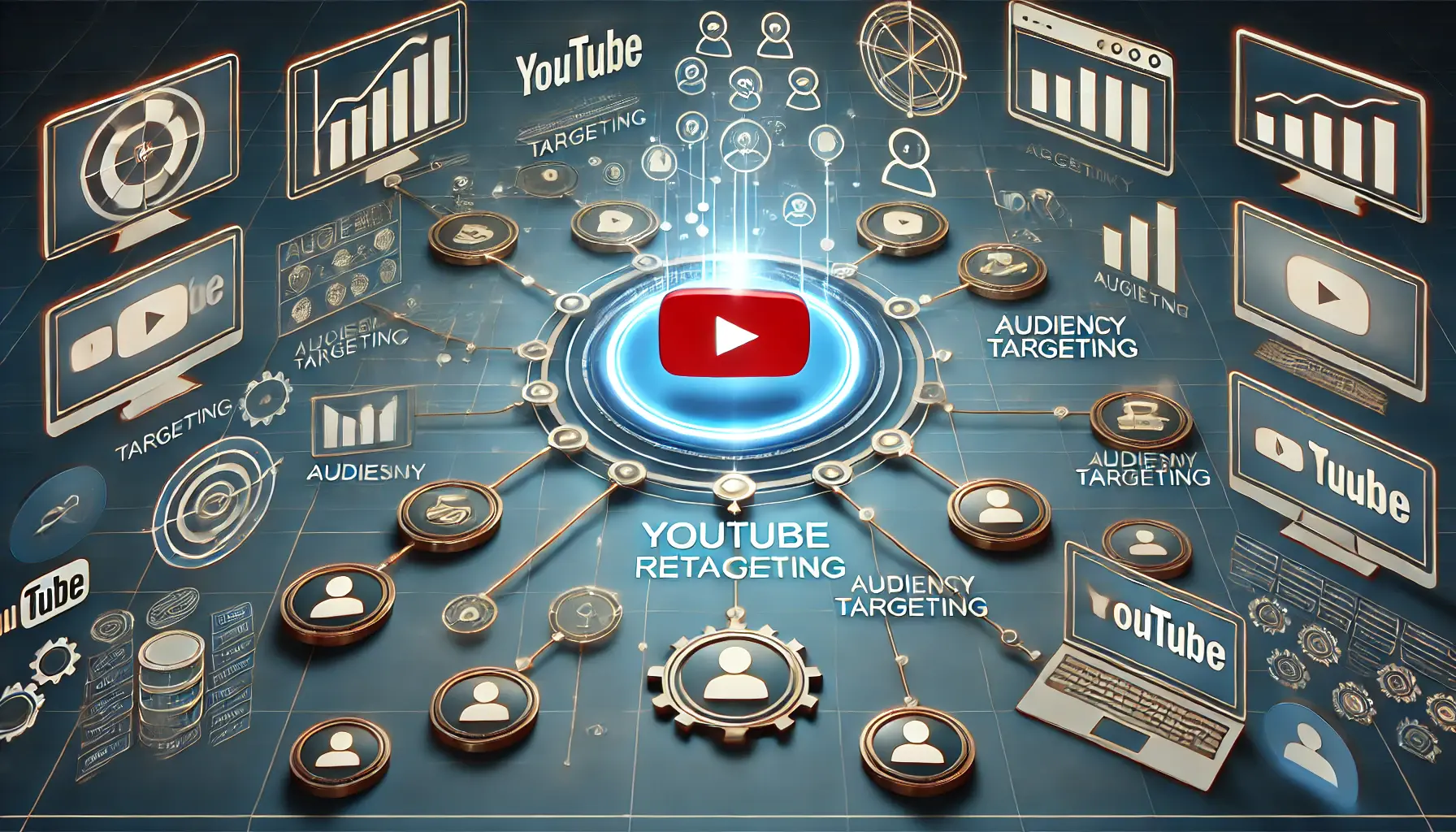
Step-by-step visualization of setting up a YouTube retargeting campaign.
Setting Up Your YouTube Retargeting Campaign
Embarking on a YouTube retargeting campaign can significantly enhance your advertising efforts by reconnecting with users who have previously engaged with your brand.
To ensure a successful campaign, it is essential to follow a structured approach.
Let’s delve into the key steps involved in setting up your YouTube retargeting campaign.

Visualizing the process of creating remarketing lists in Google Ads.
Creating Remarketing Lists in Google Ads
Remarketing lists are the foundation of your retargeting efforts.
They allow you to segment your audience based on how they have interacted with your brand, enabling targeted ad delivery.
Here’s how to build these lists:
- Connect Your YouTube Channel to Google Ads: In your Google Ads account, click the tools icon, select ‘Linked accounts,’ and follow the prompts to link your YouTube channel. This integration facilitates seamless data sharing between platforms.
- Enter Audience Manager: In Google Ads, navigate to ‘Tools and Settings,’ then select ‘Audience Manager’ under the ‘Shared Library’ section.
- Create a New Audience: Click the plus button and choose ‘YouTube users.’ Define the criteria for your list, such as users who viewed specific videos or subscribed to your channel. Assign a descriptive name to your audience for easy identification.
- Set Membership Duration: Specify the duration a user will remain in your list, up to 540 days. Set this based on your campaign goals and sales cycle.
- Save Your Audience: After setting up these options, click save. Note that the actual list might take some time to populate based on the specified conditions.
By carefully crafting remarketing lists, you lay the groundwork for successful, targeted, and effective retargeting campaigns.

Visualizing the process of defining a target audience for a retargeting campaign.
Defining Your Target Audience
Understanding and defining your target audience is critical to ensuring the success of your retargeting campaign.
Consider these aspects:
- Behavioral Segmentation: Segment users based on their behavior, such as video views, likes, comments, or shares. This approach helps in creating personalized ad content that aligns with specific user behaviors.
- Demographic Data: Use information such as age, gender, and location to deliver targeted messages to relevant audience segments.
- Level of Engagement: Distinguish between users who have deeply engaged with your content and those with minimal interaction. This differentiation helps in crafting messages that cater to varying levels of brand familiarity.
By clearly defining your target audience, you can create more personalized and compelling ad experiences that drive higher engagement and conversion rates.
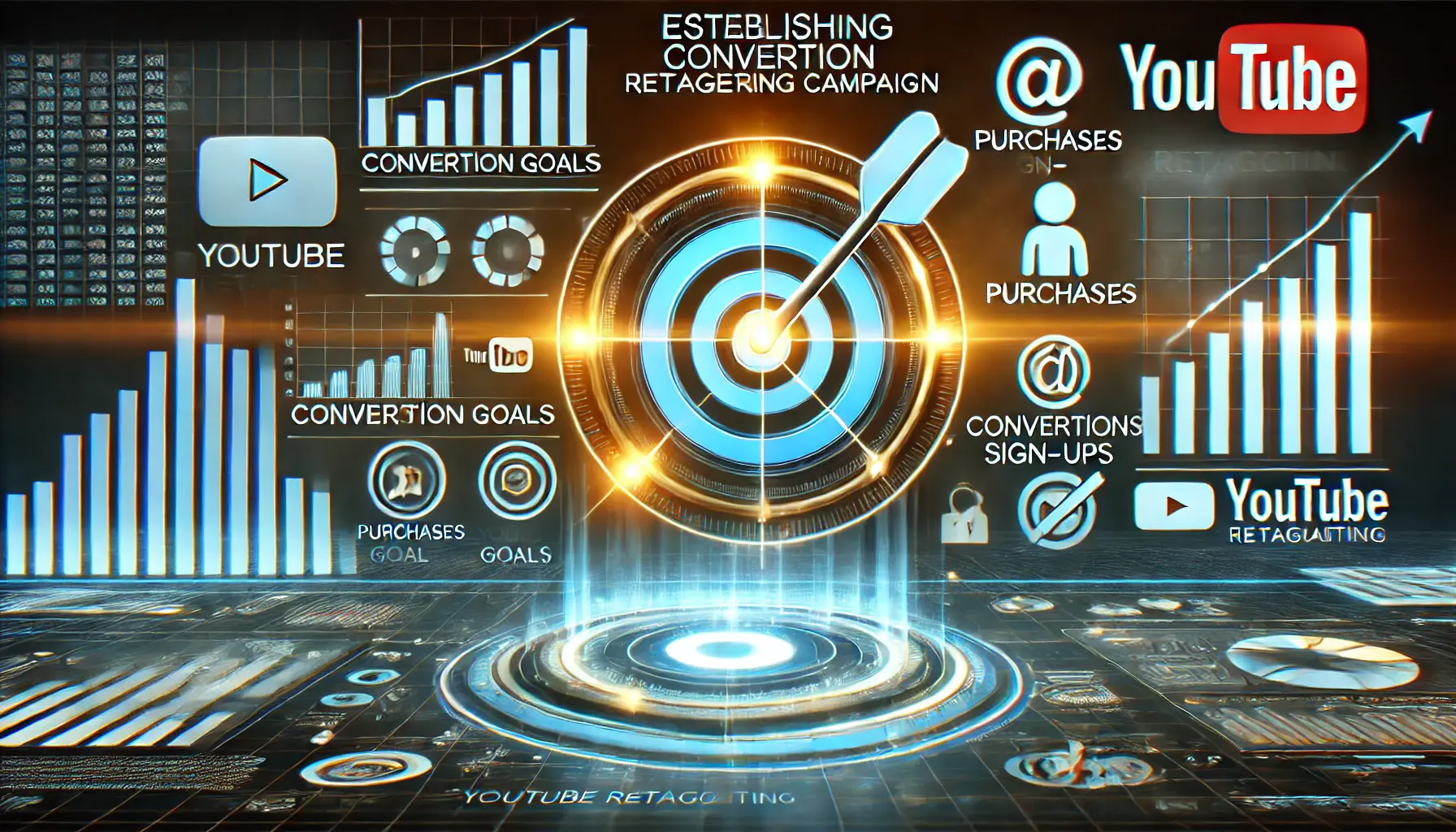
Visualizing the process of establishing conversion goals for a YouTube retargeting campaign.
Establishing Conversion Goals
Setting clear conversion goals is vital to measure the effectiveness of your retargeting campaign.
Follow these steps to establish and track your goals:
- Define Desired Actions: Determine the specific actions you want users to take, such as completing a purchase, registering for a newsletter, or downloading a resource.
- Set Up Conversion Tracking in Google Ads: In your Google Ads account, navigate to ‘Tools and Settings,’ select ‘Conversions,’ and click the plus icon to create a new conversion action. Provide all relevant details, including category, name, value, and count.
- Implement Conversion Tags: After setting up the conversion action, Google Ads will provide a conversion tracking tag. Implement this tag on the relevant pages of your website to track user actions accurately.
- Monitor and Optimize: Regularly review your conversion data to assess performance. Use these insights to optimize your campaigns by adjusting targeting, ad creatives, and bidding strategies as needed.
Determining and tracking conversion goals provide valuable insights into your campaign, enabling you to make data-driven decisions for improvement.
By carefully planning and executing your YouTube retargeting campaign, including detailed remarketing lists, clear audience definitions, and conversion goals, you set your campaign up for success, reconnecting with engaged users and driving meaningful results.
Following a structured approach to create remarketing lists, define audiences, and set conversion goals ensures a successful retargeting campaign.
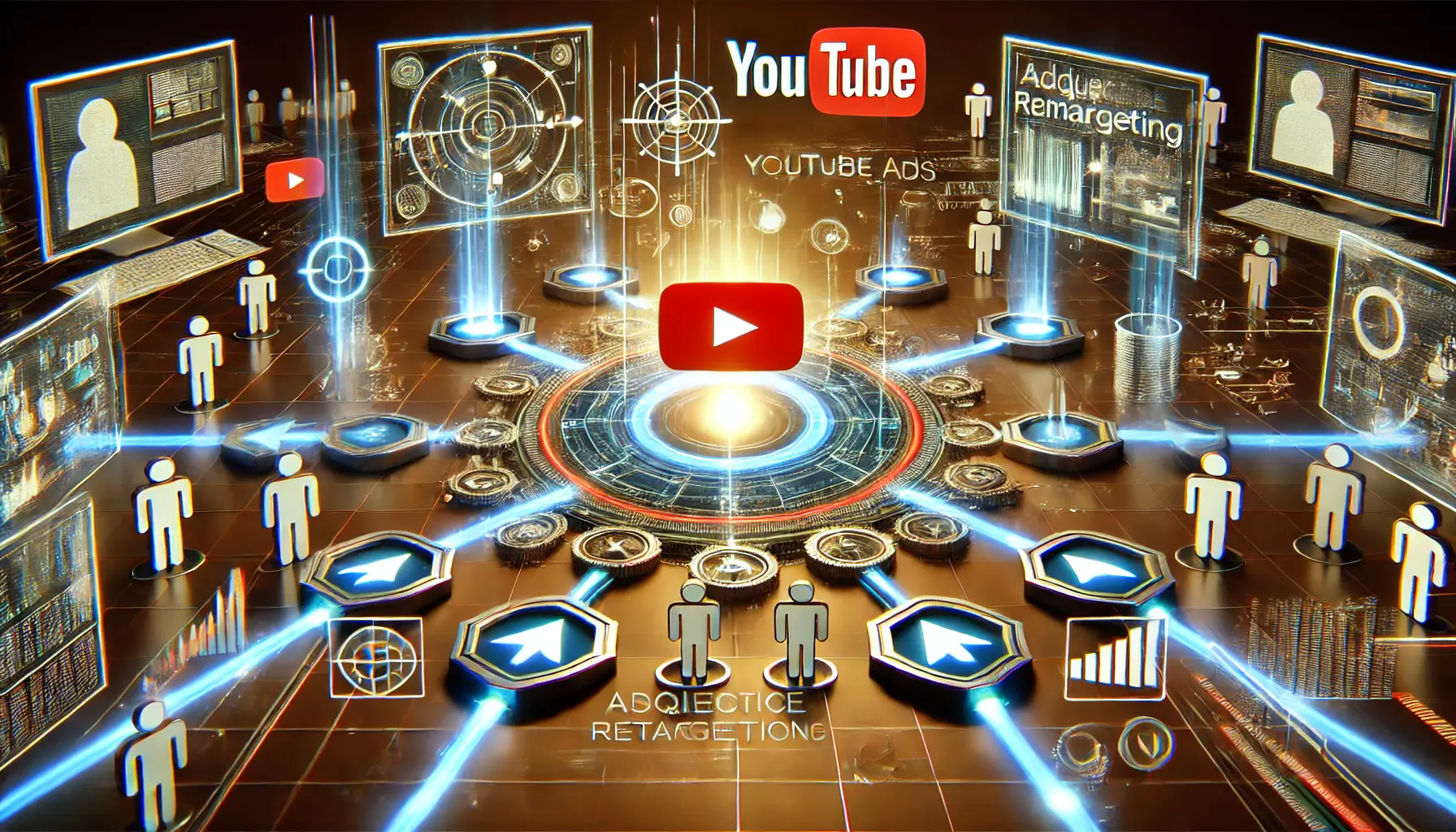
Visualizing advanced retargeting strategies for YouTube Ads.
Advanced Retargeting Strategies for YouTube Ads
To maximize the effectiveness of your YouTube advertising campaigns, it’s essential to implement advanced retargeting strategies.
These approaches allow you to engage more deeply with your audience and drive higher conversion rates.
Let’s explore some of these strategies in detail.
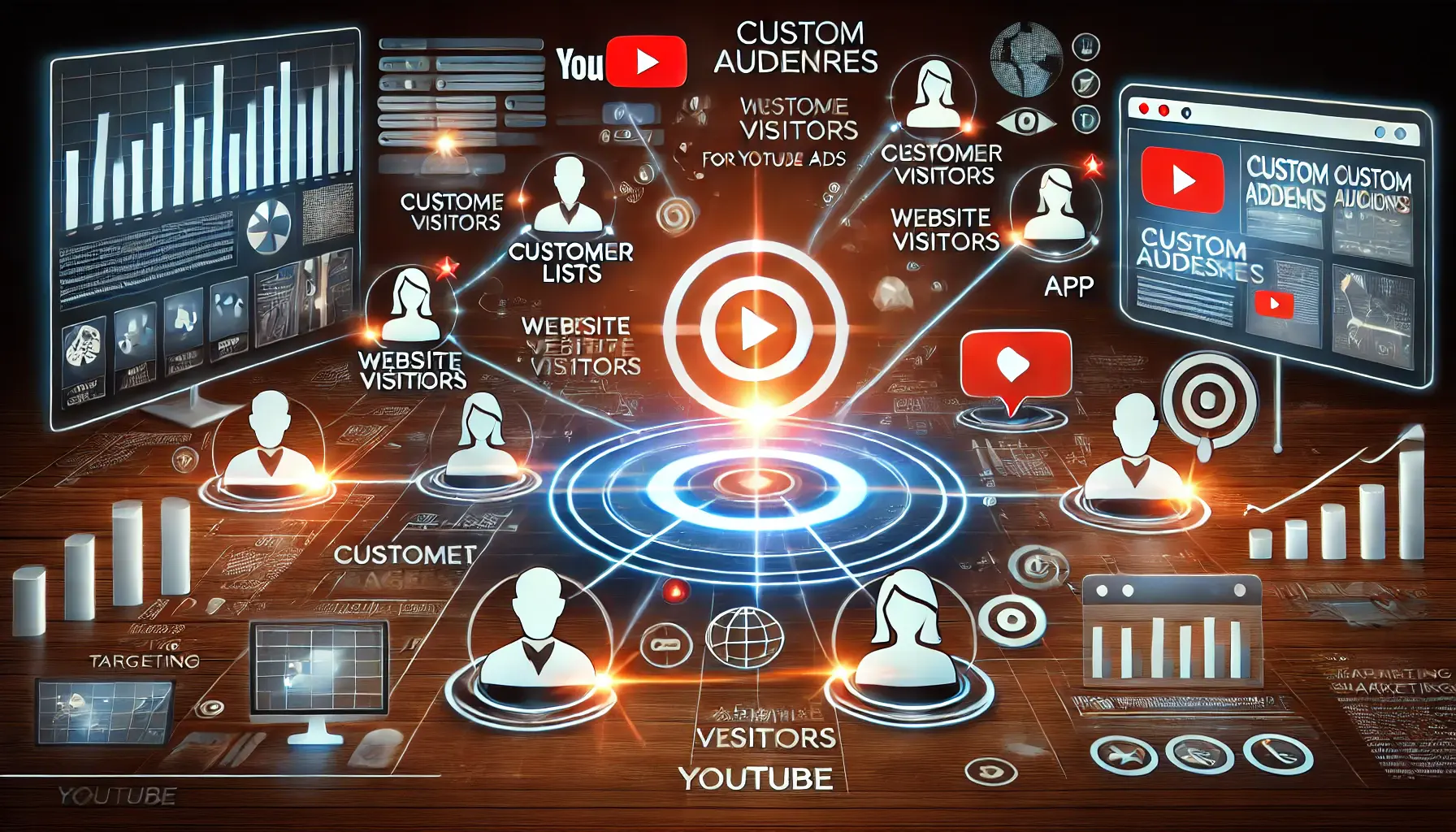
Visualizing the concept of utilizing custom audiences for YouTube Ads.
Utilizing Custom Audiences
Custom audiences enable you to target users based on specific criteria, enhancing the precision of your retargeting efforts.
Here’s how to leverage them:
- Customer Match: Upload a list of customer contact information, such as email addresses, into Google Ads. This allows you to serve ads to your existing customers or leads across YouTube and other Google properties.
- Website Visitors: Build remarketing lists of individuals who have accessed your website. By placing a Google Ads remarketing tag on your site, you can track visitors and show them targeted ads on YouTube.
- App Users: If you have a mobile app, you can target users who have interacted with it, such as those who installed your app, made in-app purchases, or achieved specific milestones.
By using custom audiences, you can deliver personalized content to users who have already shown interest in your brand, increasing the likelihood of conversions.

Visualizing the process of running sequential retargeting for YouTube Ads.
How to Run Sequential Retargeting
Sequential retargeting involves running ads in a sequence to guide users deeper into the customer journey.
This approach helps build a story and nurture leads effectively.
Here’s how to implement it:
- Define the Sequence: Develop a series of ads that tell a consistent story or progressively reveal information about your product or service.
- Set Up Ad Sequencing in Google Ads: Utilize the ‘Video Ad Sequencing’ feature in Google Ads to place ads in the desired order. Specify the sequence and frequency to control how users experience your campaign.
- Performance Tracking: Monitor the performance of each ad in the sequence to identify drop-off points and optimize accordingly.
Sequential retargeting enables you to engage users through a well-structured storyline, increasing their connection to your brand and leading them more effectively toward conversion.
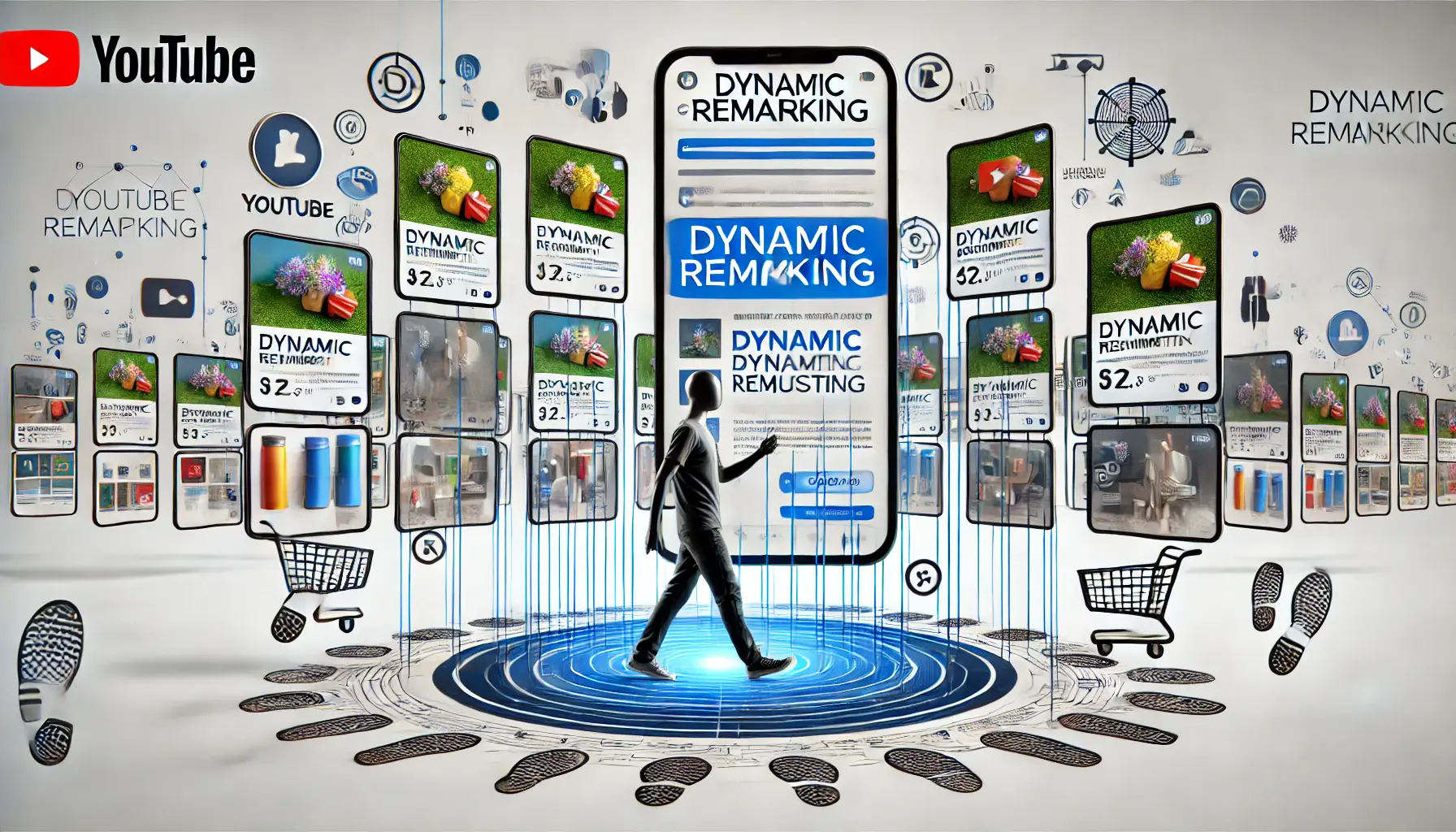
Visualizing how dynamic remarketing works in YouTube Ads with personalized product recommendations.
How Dynamic Remarketing Works
Dynamic remarketing takes personalization a step further by displaying ads to users featuring products or services they viewed on your website.
This strategy is particularly effective for e-commerce businesses.
To use dynamic remarketing:
- Set Up a Product or Service Feed: Create a feed listing your products or services, including images, prices, and descriptions.
- Employ the Remarketing Tag: Place the dynamic remarketing tag on your site to track user behavior and connect it to your feed.
- Enable Dynamic Ads: In Google Ads, create dynamic ads that automatically populate with products or services from your feed based on what users have viewed.
By leveraging dynamic remarketing, you can deliver highly relevant ads that remind users of their interest in your offerings, encouraging them to return and make a purchase.
These advanced retargeting tactics can significantly enhance the effectiveness of YouTube advertising campaigns.
By including custom audiences in your targeting, using sequential retargeting, and leveraging dynamic remarketing, you can interact with your audience more effectively and drive higher conversions.
- Custom audiences personalize ad experiences.
- Sequential retargeting builds deeper engagement.
- Dynamic remarketing drives conversions with tailored ads.
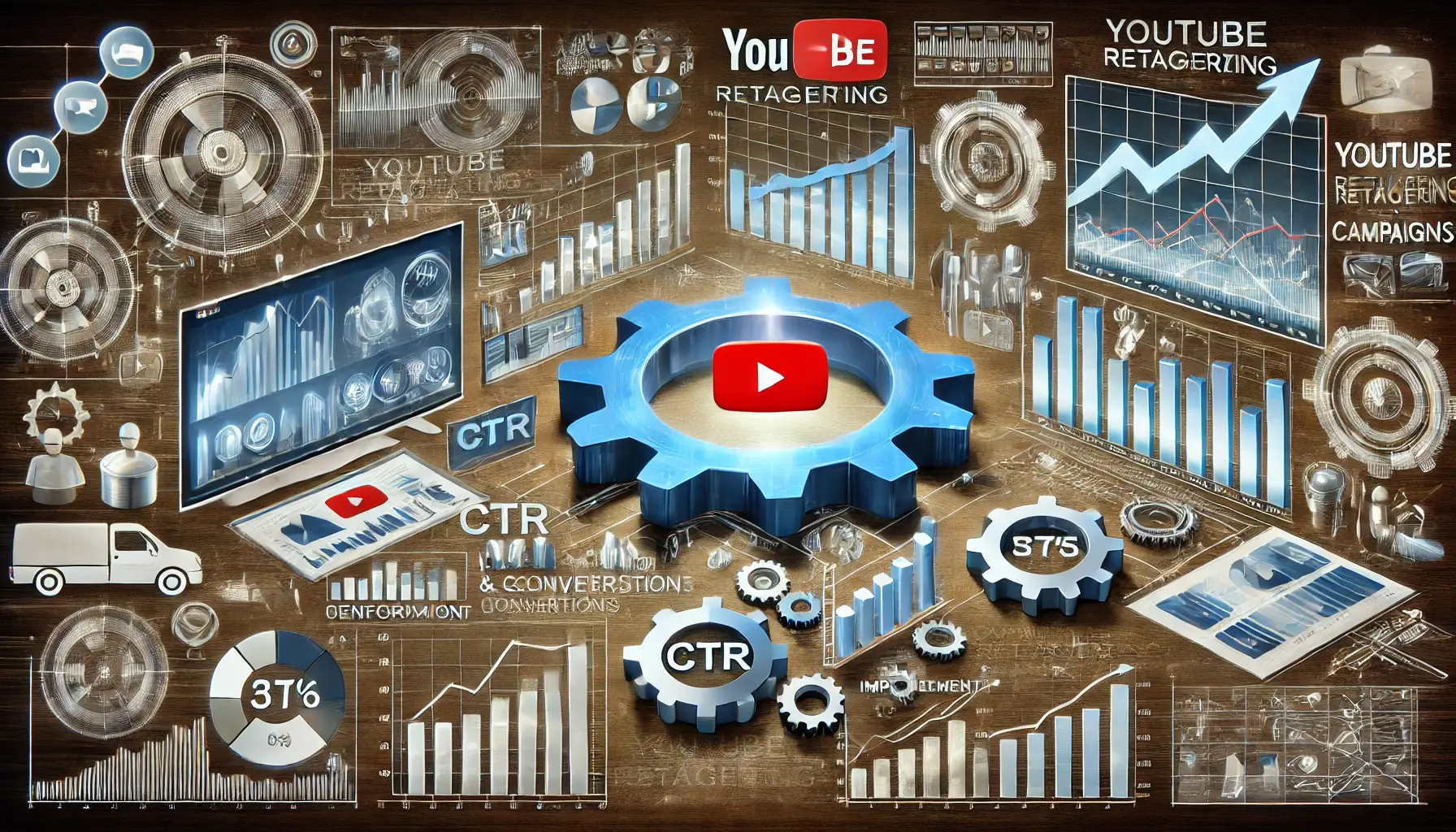
Visualizing the process of measuring and optimizing YouTube retargeting campaigns.
Measuring and Optimizing Your YouTube Retargeting Campaigns
To ensure the success of your YouTube retargeting efforts, it’s crucial to continuously measure and optimize your campaigns.
This process involves analyzing performance metrics, conducting A/B testing, and making data-driven adjustments to enhance effectiveness.
Let’s explore these steps in detail.
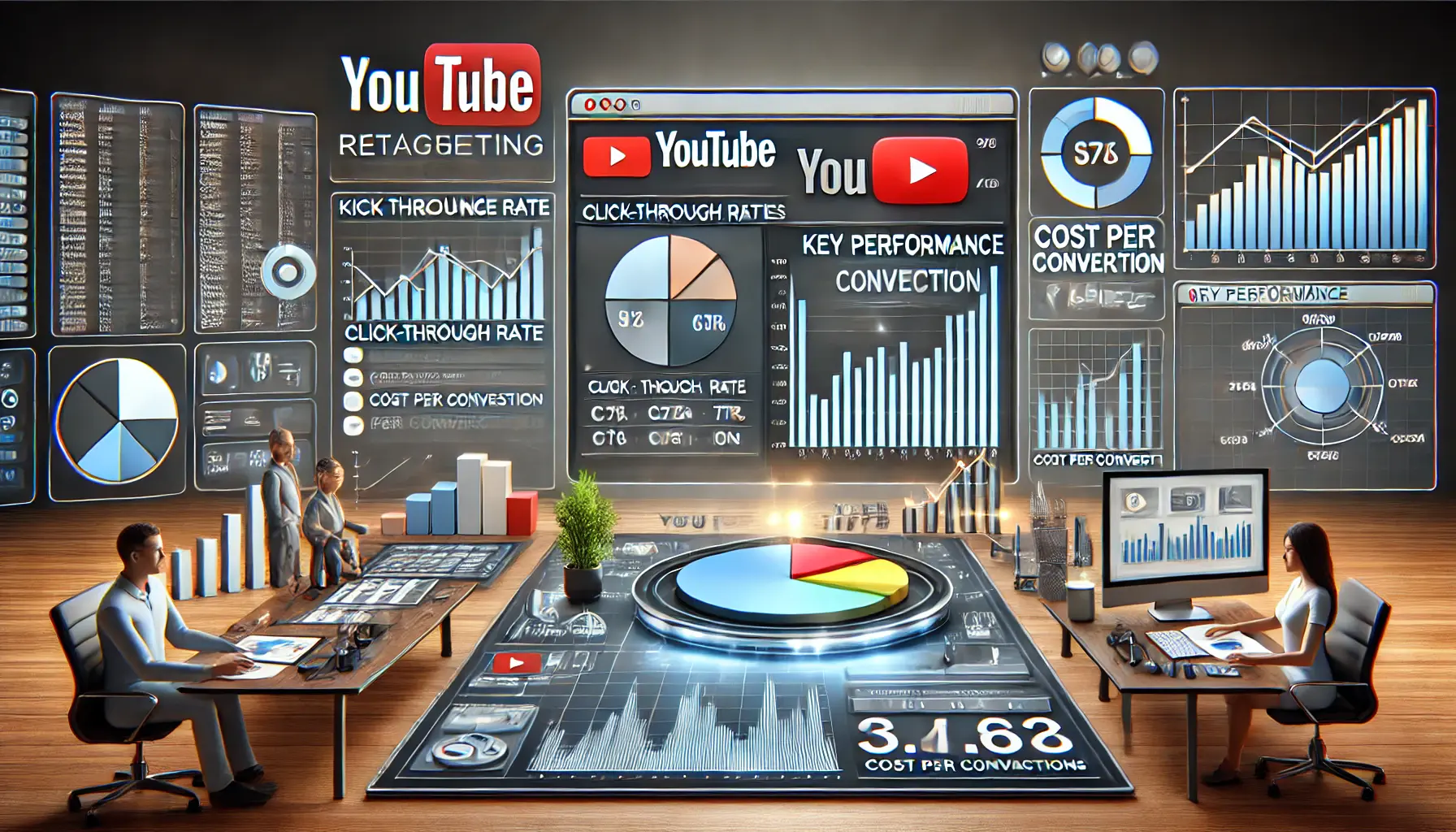
Visualizing the analysis of key performance metrics for YouTube retargeting campaigns.
Analyzing Key Performance Metrics
Regularly monitoring key performance indicators (KPIs) provides insights into your campaign’s effectiveness.
Focus on the following metrics:
- Click-Through Rate (CTR): The percentage of viewers who clicked your ad after viewing it. A higher CTR suggests more compelling ad content.
- Conversion Rate: The percentage of users who completed a desired action, such as making a purchase or signing up for a newsletter, after clicking your ad.
- Cost Per Conversion: Calculates the average cost incurred for each conversion, helping assess the financial efficiency of your campaign.
- View-Through Rate (VTR): The percentage of users who viewed your ad to completion, reflecting engagement levels.
Analysis of these metrics allows for a better understanding of which elements need improvement and how to make intelligent modifications to optimize your retargeting campaigns.
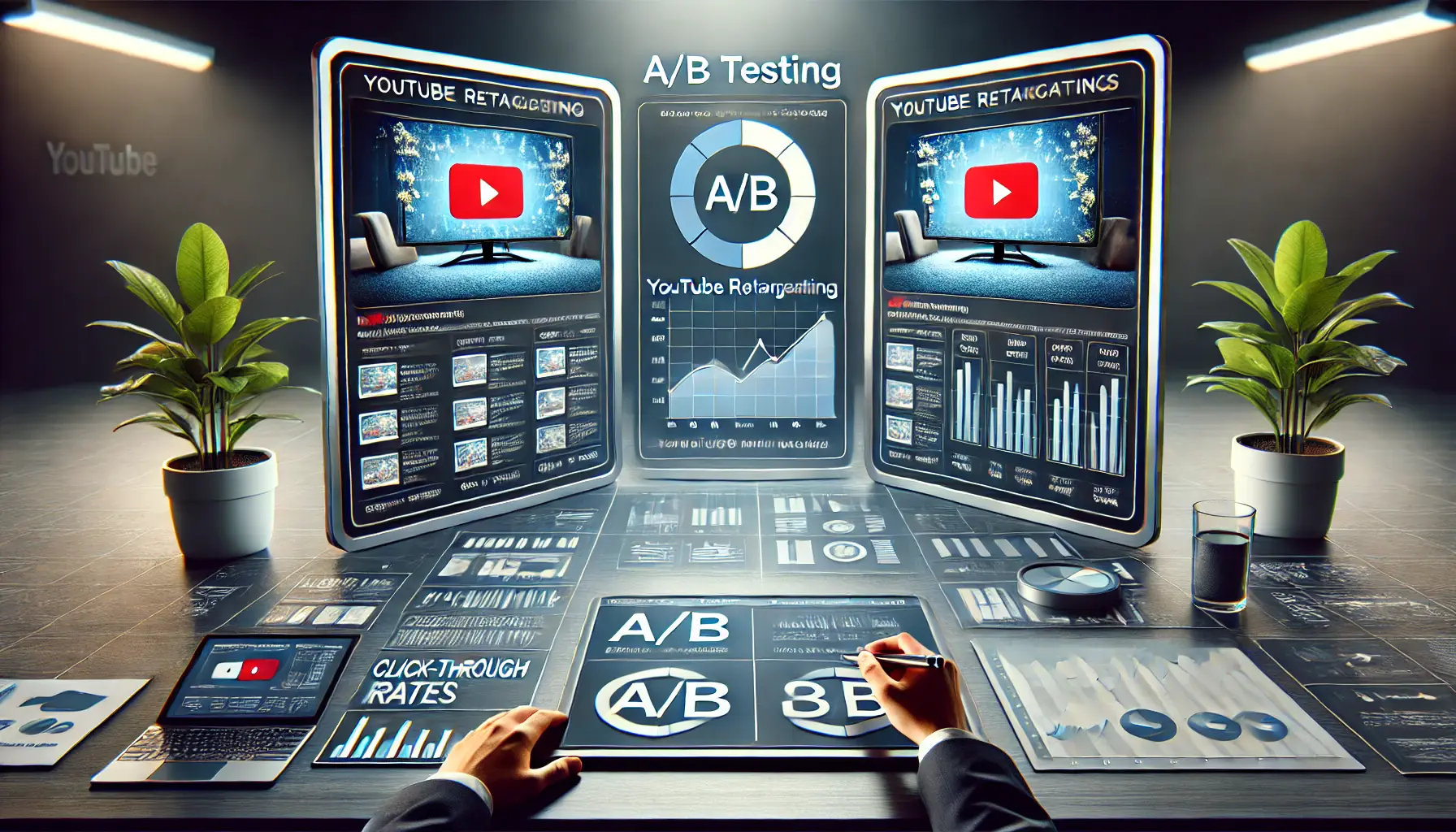
undefined
Conducting A/B Testing
A/B testing refers to running two different versions of an ad to see which one performs better.
Apply this as follows:
- Identify Variables to Test: This may include ad creatives, headlines, calls-to-action, or targeting parameters.
- Create Variations: Make two versions of the ad, each with one element different to isolate the impact of that particular element.
- Run Tests Simultaneously: Launch both ad versions concurrently to ensure external factors don’t skew results.
- Analyze Results: Compare performance metrics to determine which variation yields better outcomes.
Regular A/B testing allows for continuous refinement of your ads, leading to improved engagement and conversion rates.

Visualizing the process of making data-driven adjustments to optimize YouTube retargeting campaigns.
Implementing Data-Driven Adjustments
Based on your analysis and testing, make strategic adjustments to enhance campaign performance:
- Refine Targeting: Adjust audience segments to target users showing more engagement or higher conversion potential.
- Optimize Ad Creatives: Enhance creatives, messaging, and calls-to-action using insights from A/B testing.
- Adjust Bidding Strategies: Update bids to better capture high-performing segments with an appropriate budget.
- Schedule Ads Strategically: Review performance data to determine the best times to serve ads for maximum visibility and engagement.
By using these data-oriented adjustments, you can constantly enhance the effectiveness of your YouTube retargeting campaigns, achieve better ROI, and meet your marketing goals effectively.
Analyze performance metrics like CTRClick-Through Rate, a metric that measures the percentage of users who click on an ad after viewing it. and conversion rates to refine strategies and maximize ROI for your campaigns.
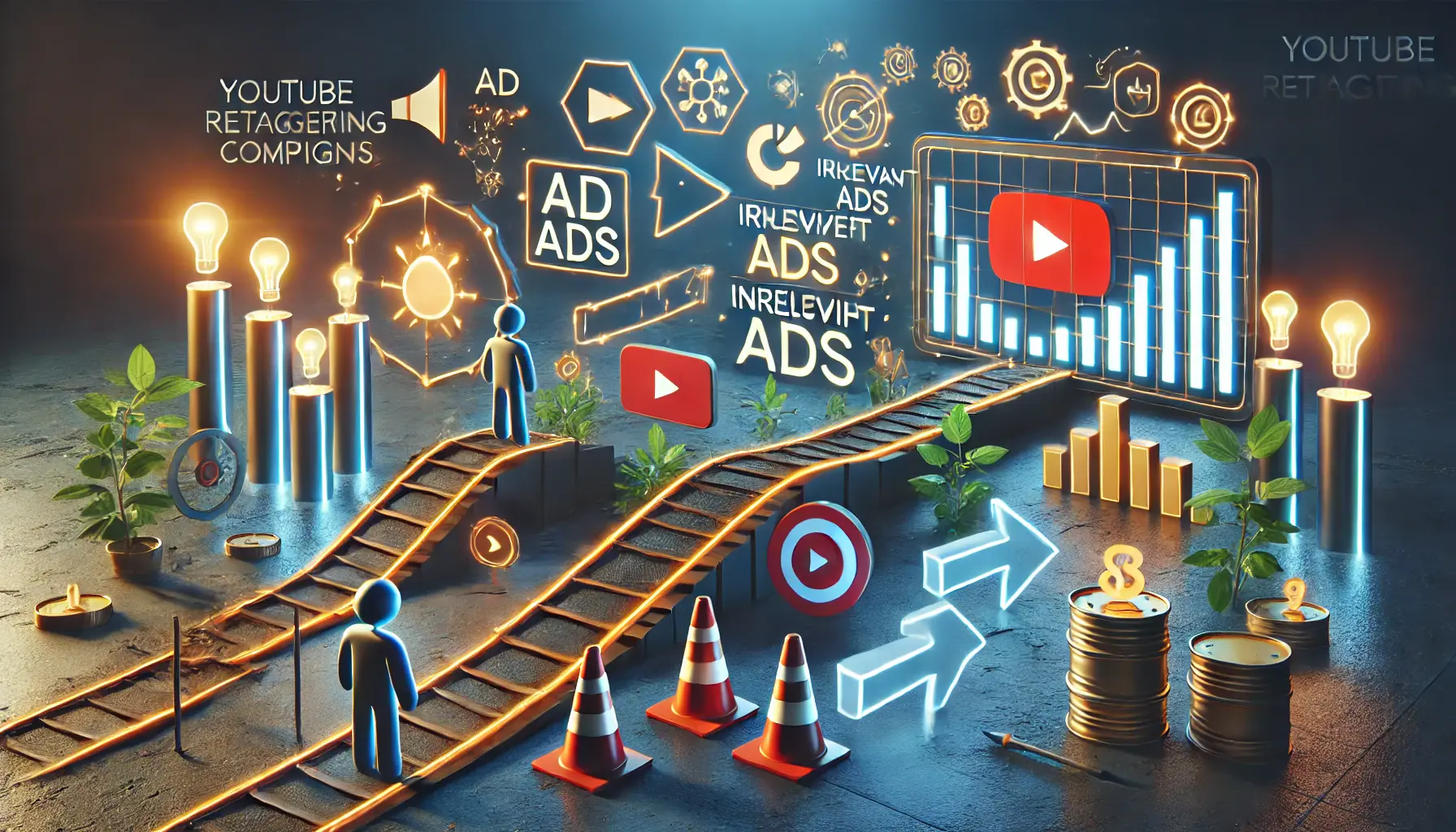
Visualizing the challenges and solutions in YouTube retargeting campaigns.
Common Challenges in YouTube Retargeting and How to Overcome Them
While YouTube retargeting is a powerful tool for re-engaging your audience, it comes with its own set of challenges.
Understanding these obstacles and implementing effective solutions can significantly enhance your campaign’s success.
Let’s explore some common challenges and strategies to overcome them.

Visualizing the impact of ad fatigue among YouTube retargeting viewers.
Ad Fatigue Among Viewers
Ad fatigue occurs when users get tired of seeing the same ads repeatedly, leading to decreased engagement and effectiveness.
Here are some best practices to combat this:
- Rotate Ad Creatives: Refresh your ad creatives regularly to keep them fresh and engaging for your audience.
- Limit Ad Frequency: Use frequency capping in your Google Ads settings to control how often your ads are shown to the same user.
- Segment Your Audience: Create different ad variations tailored to specific audience segments to maintain relevance and interest.
By implementing these strategies, you can reduce ad fatigue and maintain viewer engagement.

Visualizing the process of ensuring ad relevance in YouTube retargeting campaigns.
Ensuring Ad Relevance
Delivering irrelevant ads can lead to a poor user experience and wasted ad spend.
To ensure your ads resonate with your audience:
- Leverage Behavioral Data: Use user behavior insights to create ads that align with their interests and previous interactions with your brand.
- Dynamic Remarketing: Display ads featuring products or services users have previously viewed on your website for greater relevance.
- Personalize Ad Content: Tailor your messaging to address the specific needs and preferences of different audience segments.
Focusing on ad relevance enhances user experience and boosts conversion rates.
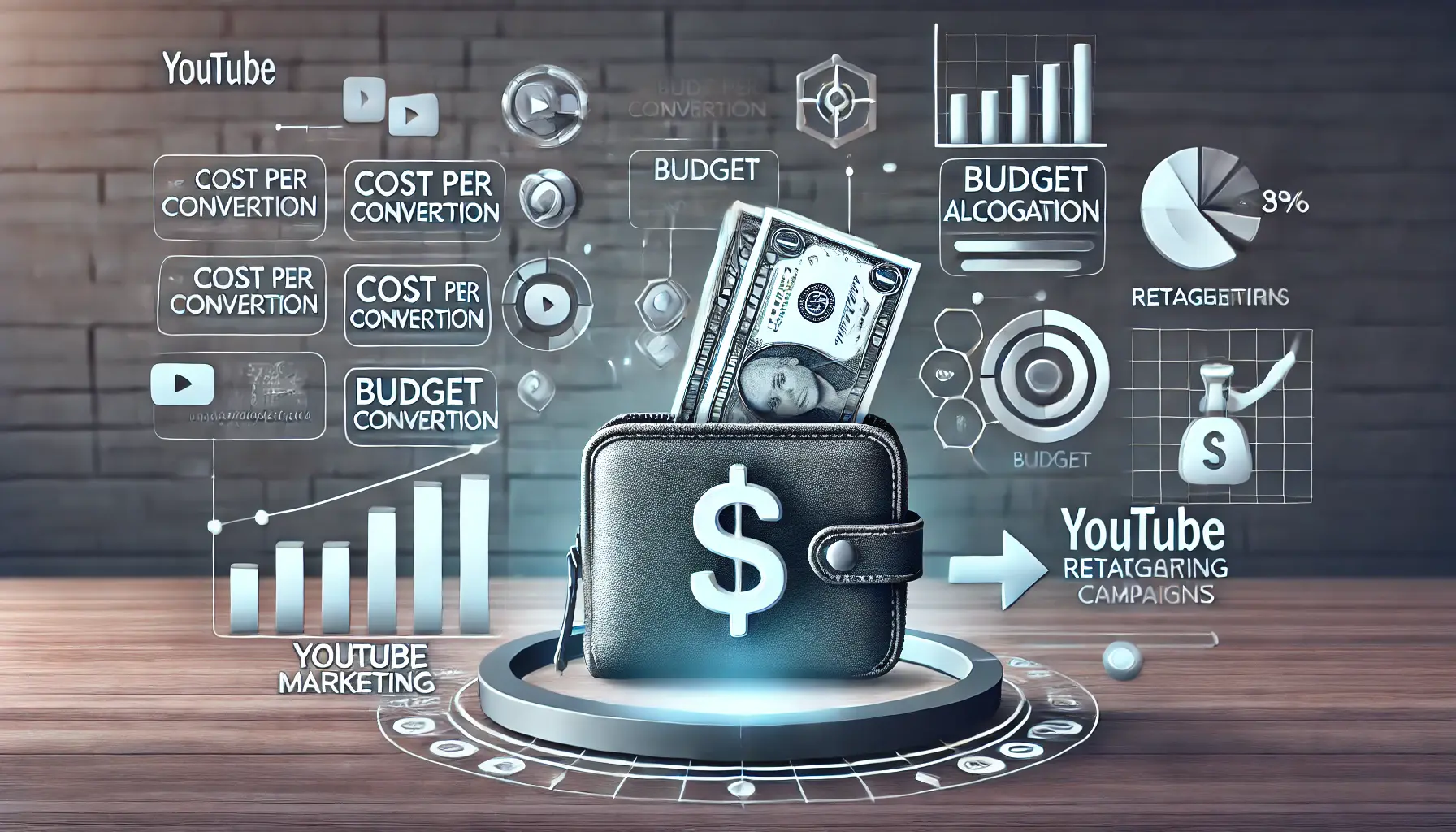
Visualizing the process of managing budget constraints in YouTube retargeting campaigns.
Managing Budget Constraints
Budget limitations can hinder the reach and effectiveness of your retargeting campaigns.
To optimize your budget:
- Prioritize High-Value Audiences: Allocate more budget to audience segments that demonstrate higher engagement or conversion potential.
- Optimize Bidding Strategies: Utilize automated bidding options in Google Ads to maximize conversions within your budget.
- Monitor Performance Metrics: Regularly review campaign performance to identify areas where budget adjustments can improve results.
Effective budget management ensures that your retargeting efforts are both efficient and impactful.

Visualizing the importance of compliance with privacy regulations in YouTube retargeting campaigns.
Compliance with Privacy Regulations
Adhering to privacy laws, such as GDPRGeneral Data Protection Regulation, a European privacy law for protecting personal data., is essential in retargeting campaigns.
To maintain compliance:
- Obtain User Consent: Ensure that you have explicit consent from users to collect and use their data for retargeting purposes.
- Provide Clear Privacy Policies: Clearly communicate how user data is collected, used, and protected in your privacy policy.
- Stay Updated on Regulations: Regularly review and update your practices to comply with the latest privacy laws and guidelines.
By proactively mitigating these challenges, you can reinforce the potential of your YouTube retargeting campaigns and reach your marketing goals more effectively.
- Rotate creatives regularly to combat ad fatigue.
- Ensure ad relevance using behavioral data and segmentation.
- Adhere to privacy regulations for compliant targeting.

Visualizing the maximization of success with YouTube retargeting campaigns.
Maximizing Success with YouTube Retargeting
YouTube retargeting is a powerful tool that allows marketers to reconnect with their audience, drive engagement, and boost conversions.
By leveraging advanced strategies, overcoming challenges, and consistently optimizing campaigns, you can achieve exceptional results.
This article has covered a range of insights to guide you in mastering YouTube retargeting.
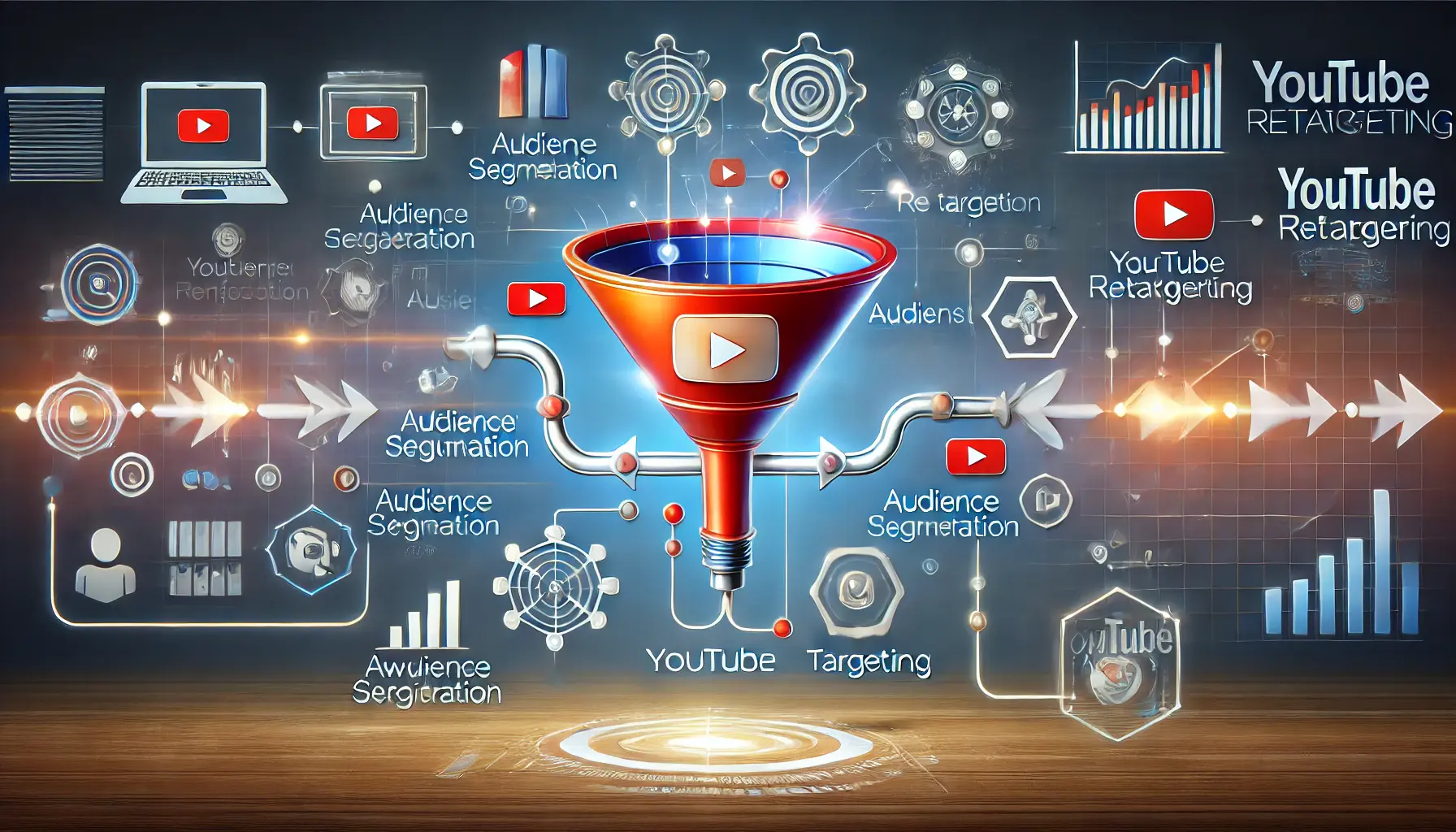
Visualizing the core principles of YouTube retargeting with a structured marketing funnel.
The Core Principles of YouTube Retargeting
Successful YouTube retargeting begins with understanding its core principles.
Creating remarketing lists, defining your target audience, and setting clear conversion goals are foundational steps that pave the way for effective campaigns.
These elements ensure that your efforts are targeted and result-oriented, maximizing the return on investment.
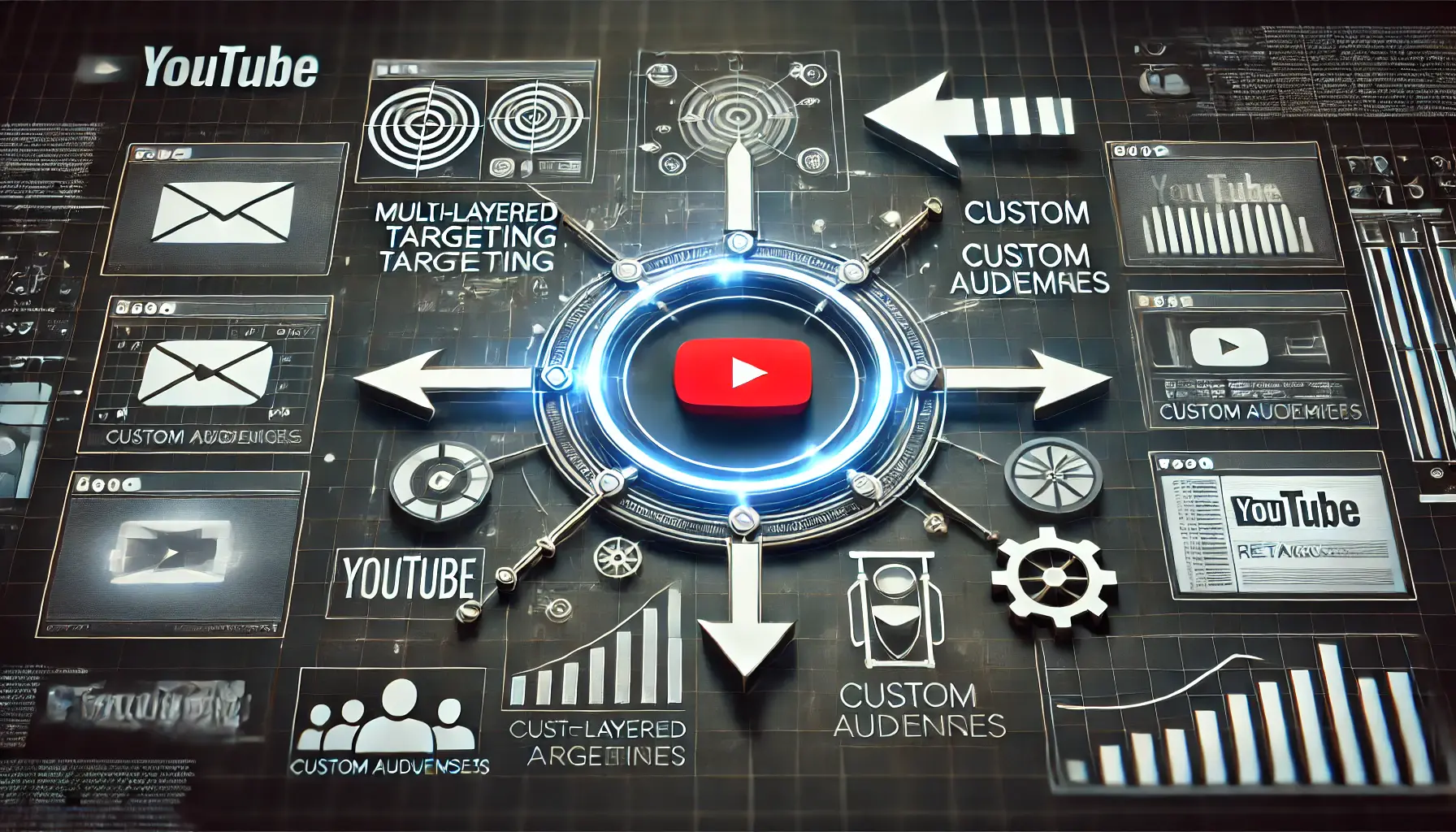
Visualizing the implementation of advanced strategies in YouTube retargeting campaigns.
Implementing Advanced Strategies
To enhance your campaigns, advanced strategies such as utilizing custom audiences, sequential retargeting, and dynamic remarketing can be game-changers.
These methods allow you to personalize ads, guide users through the customer journey, and maintain relevance with tailored content.
Advanced tactics are essential for staying competitive and engaging users effectively.

Visualizing the process of addressing challenges and ensuring sustainable growth in YouTube retargeting campaigns.
Addressing Challenges for Sustainable Growth
No retargeting campaign is without its challenges.
Common obstacles such as ad fatigue, maintaining ad relevance, budget constraints, and privacy compliance can impact your campaign’s success.
However, by rotating creatives, leveraging behavioral data, managing budgets wisely, and adhering to privacy regulations, you can overcome these hurdles and build a sustainable strategy.

Visualizing the optimization process of YouTube retargeting campaigns.
Optimizing Campaign Performance
Measuring performance and making data-driven adjustments are critical for long-term success.
Analyzing key performance metrics like CTR, conversion rates, and cost per conversion provides insights that inform your decisions.
Conducting A/B testing and refining targeting and bidding strategies ensure your campaigns continue to perform at their best.

Visualizing the conclusion of YouTube retargeting strategies and long-term planning.
Final Thoughts
YouTube retargeting can immensely help a brand scale its reach and conversions.
By implementing the strategies and takeaways from this article, you can create highly effective campaigns that connect with your audience, overcome common challenges, and achieve your marketing objectives.
Remember, the secret to success lies in continuous learning, adaptation, and a commitment to delivering value to your audience.
Continuous learning, adaptation, and data-driven optimization are the keys to achieving sustained success in YouTube retargeting campaigns.
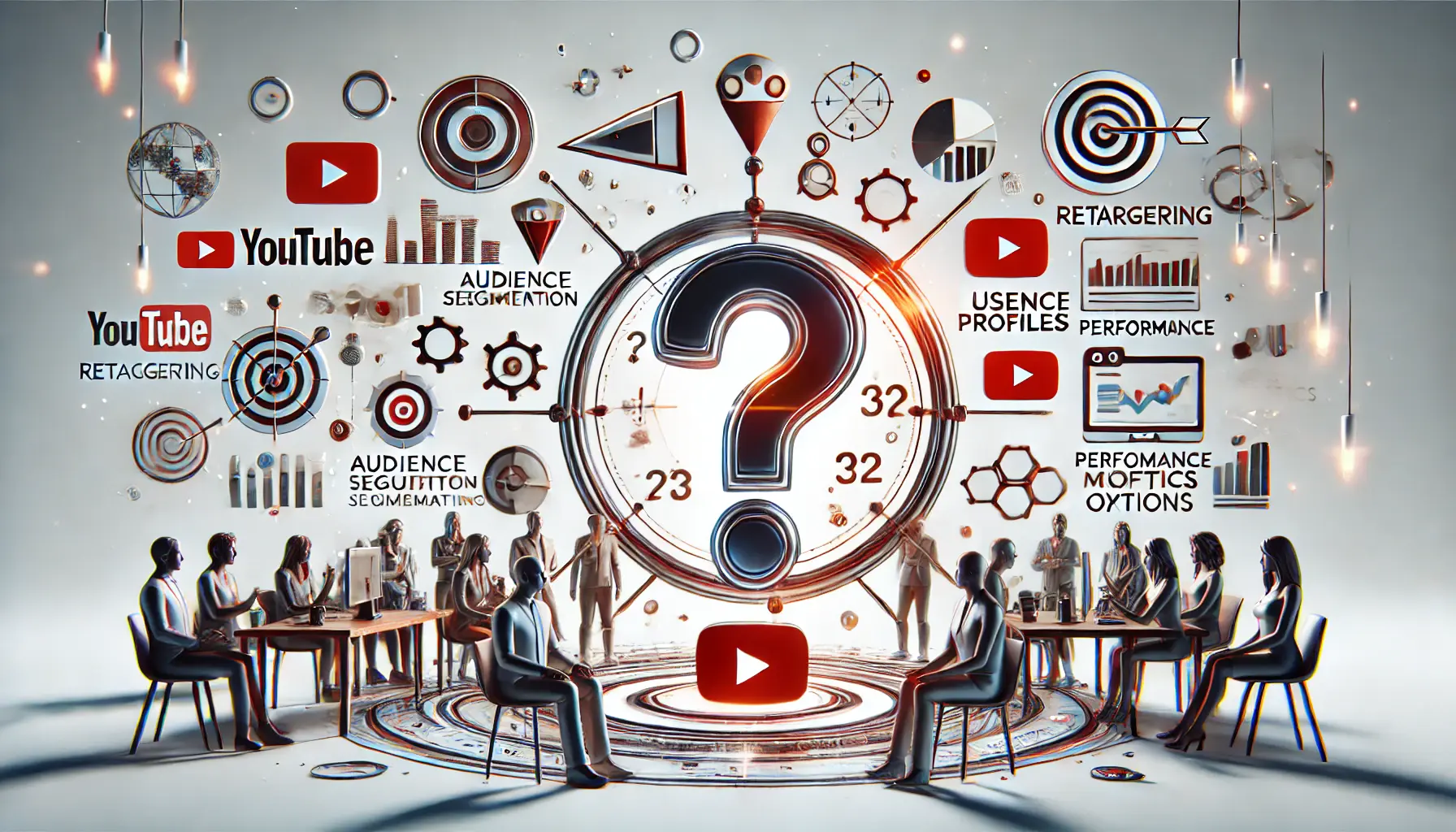
Visualizing the process of answering frequently asked questions about YouTube retargeting.
Your campaigns can be managed by an agency specialized in Google Ads, check out our service page.
Frequently Asked Questions About YouTube Retargeting
Addressing common queries to enhance your understanding of YouTube retargeting strategies.
YouTube retargeting involves showing ads to users who have previously interacted with your channel or website, enhancing ad relevance and conversion rates.
In Google AdsAn online advertising platform by Google for displaying ads across various channels., under ‘Tools and Settings,’ select ‘Audience Manager,’ then create a new audience from user interactions with either your YouTube channel or website.
Custom audiences provide highly accurate targeting based on specific user behaviors, resulting in more personalized ads and increased engagement.
Rotate ad creatives regularly, set frequency caps, and segment your audience to deliver varied and relevant content.
Key metrics include Click-Through Rate (CTR), conversion rateThe percentage of users who complete a desired action after interacting with an ad., cost per conversion, and view-through rate (VTRView-Through Rate, the percentage of users who watch a video ad to completion.).
Sequential retargeting delivers a series of ads in a specific order to guide users through the customer journey.
Dynamic remarketing shows ads featuring products or services that users have previously viewed on your website, increasing relevance.
Obtain explicit user consent for data collection, provide clear privacy policies, and stay updated on relevant laws.
Challenges include ad fatigue, maintaining ad relevance, budget constraints, and adhering to privacy regulations.
